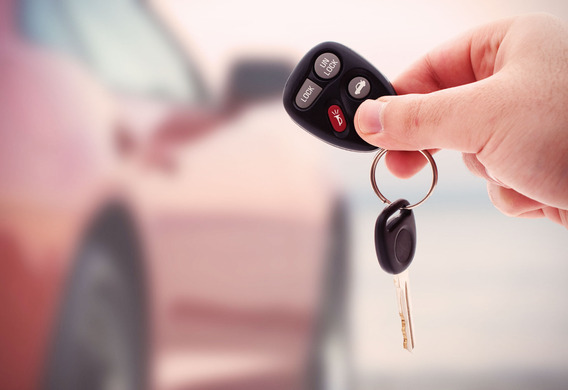
"You can do anything"-quite common judgment. At the same time, each owner is trying to protect his transport from the hijacker by installing the most modern and advanced anti-theft systems.
The most expensive and reliable systems are systems to track and control the vehicle through a global positioning system (GPS), much easier to say via satellite communications. But are these systems good? Are they the apex of the evolution of anti-theft devices? Is it worth paying much for the installation and maintenance of such systems?
No satellite, no insurance.
A satellite-based security system is not only a way to secure your car, but also the possibility of saving: many insurance companies offer a significant discount on insurance against the hijackings of customers who have installed a satellite security system. Some insurance companies only make insurance for a particularly hijacker only if they install a satellite security complex on them. This policy of insurance companies shows the effectiveness of satellite anti-theft systems.
How and why the satellite system is not a panacea for theft
A satellite anti-theft system uses two or three channels of communication. The first is satellite positioning, and the second is a cellular GSM module that sends the car's coordinates. The third communication method is a radio beacon. It is optional and does not include all satellite security complexes. Thus, the search for a car is possible only where there is cellular communication. For example, in some underground parking spaces, the vehicle will not be visible to the tracking centre. Moreover, special devices can "mute" the signal of the cellular transmitter, which will also make communication with the control center impossible. The signal is given only rarely (once in 20 to 60 minutes) and it is not more difficult to create a signal for it than for the GSM module. Sometimes it's easy to disconnect a GSM-transmitter: some installers mount it in the windshield area for a more confident reception and the hijacker doesn't have trouble finding it.
There is also a human factor: when setting up the alarm, at least a few people in the installation center will know the secret code to disable it. Despite the regular inspection of staff as well as external audit, serious installation centres cannot completely rule out the possibility of collusion by the staff member and the hijackers.
Some archaic alarm models are deactivated by car owners by entering secret code on a keyboard installed in the passenger compartment. The alarm can be disabled not only by entering secret code, but also by performing a series of simple actions (e.g. three times open and close the door, press the brake pedal, and include dimensions). Secret code or sequence of actions can be obtained simply by observing the owner of the car for several days. That's what hijackers do.
Most modern satellite signals are equipped with an electronic mark instead of the secret code that the owner of the car should always carry with him. I mean, the mark might just be stolen along with the keys. In this case, the satellite alarm goes off automatically and will simply be useless. The mark is rarely supplemented by a secret button inside a car, but this solution has not been widely distributed because of low efficiency and inconvenience of use: the owner of the car, which establishes a non-expensive security complex for which you have to pay monthly, is unlikely to want to complicate life by pressing a secret button, which is naturally in an uncomfortable position.
The hijackers often install satellite security systems into their vehicles to study the features of installation in different centres.
What do the professionals advise on auto theft?
Any specialist will say that there is no absolutely reliable way to protect the car from being stolen. At present, the satellite signals are the most reliable among the systems that can be offered as a kit ready for installation.
However, there are alternative ways to protect the car from being stolen. The most reliable is the "unobvious" for the hijacker who uses a vehicle wiring. The thief is waiting for a costly satellite alarm to collider. Simple covert ways of protection from theft can lead to a deadlock and force them to retreat.
Summary
The satellite anti-theft system is one of the most expensive and reliable ways to protect the car from theft, but it also has weaknesses. Its working principle is at the same time its most vulnerable place: GPS and GSM transmitters, as well as the radio beacon, have learned to mute quickly, sometimes at the same time. This completely prevents the security provider from contacting the tracking center. Advanced security systems use additional transmitters that are only included when the primary is deactivated, but their effectiveness is low. The level of protection of the satellite alarm system depends more on the professionalism and sophistication of the installers.
It is also worth remembering that professional hijackers use not only sophisticated technical means to steal a car, but also connections with the information they need and surveillance, know the features of the installation of security systems in various service centers and places in the city, where the car will not be visible to the tracking centre dispatchers.







